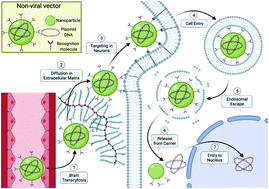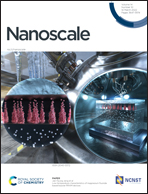Overcoming barriers in non-viral gene delivery for neurological applications
Abstract
Gene therapy for neurological disorders has attracted significant interest as a way to reverse or stop various disease pathologies. Typical gene therapies involving the central and peripheral nervous system make use of adeno-associated viral vectors whose questionable safety and limitations in manufacturing has given rise to extensive research into non-viral vectors. While early research studies have demonstrated limited efficacy with these non-viral vectors, investigation into various vector materials and functionalization methods has provided insight into ways to optimize these non-viral vectors to improve desired characteristics such as improved blood–brain barrier transcytosis, improved perfusion in brain region, enhanced cellular uptake and endosomal escape in neural cells, and nuclear transport of genetic material post- intracellular delivery. Using a combination of various strategies to enhance non-viral vectors, research groups have designed multi-functional vectors that have been successfully used in a variety of pre-clinical applications for the treatment of Parkinson's disease, brain cancers, and cellular reprogramming for neuron replacement. While more work is needed in the design of these multi-functional non-viral vectors for neural applications, much of the groundwork has been done and is reviewed here.

- This article is part of the themed collections: Recent Review Articles and Nanoscale 2022 Emerging Investigators


 Please wait while we load your content...
Please wait while we load your content...